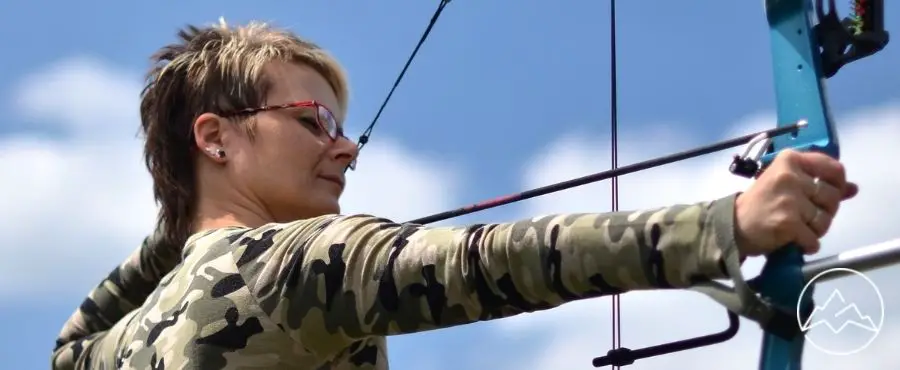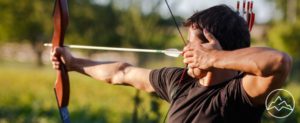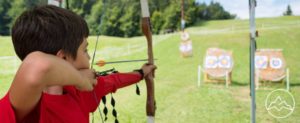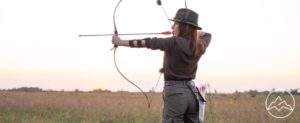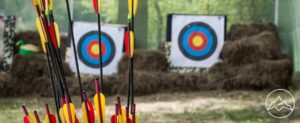In the pursuit of archery excellence, the mastery of bow sighting techniques is paramount. The art of accurately aligning the bow sight with the target requires precision, consistency, and a deep understanding of the underlying principles. This article delves into the intricacies of mastering bow sighting techniques, providing a comprehensive guide for archers seeking to enhance their accuracy and consistency.
Before embarking on the sighting process, meticulous preparation and setup are essential. Ensuring the bow is properly tuned and free from any issues is crucial. Attention to factors such as draw length, peep sight placement, and arrow flight straightness greatly influences the overall accuracy of shots. Additionally, impeccable archery form, including proper foot placement, grip, and posture, is of utmost importance.
This article explores the step-by-step process of sight adjustment, focusing on horizontal alignment adjustments and the significance of shooting on level ground. Furthermore, it delves into the intricacies of vertical adjustments to achieve first pin accuracy. Lastly, the critical adjustment of the 3rd axis of the sight is discussed, providing archers with a well-rounded understanding of the sight adjustment process.
Embracing a meticulous, detail-oriented approach, this article equips archers with the necessary knowledge and techniques to master the art of bow sighting.
Key Takeaways
- Properly tuning and setting up the bow is essential before sighting in.
- Consistent arrows and straight arrow flight are crucial for accuracy.
- Proper archery form, including foot placement, grip, and posture, is important for accuracy.
- Adjusting the bow sight and shooting for groups are necessary steps in sighting in a bow.
How to Sight In a Bow
Sighting in a bow involves adjusting the bow sight to improve accuracy and consistency, as well as ensuring proper bow setup and form. To achieve accurate shots, consistent arrow flight is crucial. It is important to start by adjusting the vertical alignment of the sight. Begin by loosening the vertical adjustment screw and moving the entire sight to achieve first pin accuracy. Test the adjustments by shooting groups of arrows and continue making adjustments until the first pin is sighted in. Once the vertical alignment is dialed in, move on to adjusting the remaining pins individually. By following this proper technique for adjusting vertical alignment, archers can achieve improved accuracy and consistency in their shots.
Preparation and Setup
Before beginning the process of sight adjustment, it is crucial to properly prepare and set up the bow for optimal accuracy and consistency.
To ensure a successful sighting in process, here are four important aspects to consider:
-
Proper Draw Length: Achieving the correct draw length is essential for accuracy and safety. It allows the archer to achieve a consistent anchor point and maintain proper form throughout the shot.
-
Importance of Peep Sight Placement: The peep sight is a small device that helps archers align their eye with the bowstring and sight pins. Proper placement of the peep sight ensures a clear line of sight and improves accuracy.
-
Bow Tuning and Setup: Before sighting in the bow, it is essential to perform a pre-check to ensure the bow is properly tuned and set up. This includes checking for any bow issues, such as loose screws or improperly mounted equipment, which can affect arrow flight and accuracy.
-
Consistent Arrows: Using arrows that are consistent in weight, spine, and length is crucial for accuracy. Inconsistent arrows can lead to varying shot placements, making it difficult to determine the necessary sight adjustments.
By addressing these key aspects during the preparation and setup phase, archers can lay a solid foundation for achieving accurate and consistent shots when sighting in their bows.
Adjusting Horizontal Alignment
To achieve optimal accuracy, adjusting the horizontal alignment of the bow sight is crucial, as it significantly impacts the arrow’s point of impact; studies have shown that even a slight misalignment can result in a significant deviation in shot placement. The importance of consistent arrow flight cannot be overstated when it comes to achieving accurate shots. Straight arrow flight is essential for accuracy, and any deviations can be attributed to common sight issues. When troubleshooting common sight issues, it is important to consider factors such as bow grip and torque, as sudden left/right impact grouping can be caused by these factors. Additionally, loose or improperly mounted equipment can also lead to inconsistent impacts. By identifying and addressing these issues, archers can ensure that their horizontal alignment is dialed in for precise and consistent shot placement.
Frequently Asked Questions
How do I determine the correct draw length for my bow?
Determining the proper draw length for a bow is essential for accuracy and safety. To determine the correct draw length, several factors should be considered, including the archer’s physique, shooting style, and comfort. One common method is to measure the wingspan and divide it by 2.5. Another approach is to use the "fist method," where the archer grips the bow handle and extends their arm, ensuring a slight bend in the elbow. Adjusting the sight for shooting on uneven terrain involves aligning the bubble level and adjusting the 3rd axis as needed to maintain accuracy.
What is the proper placement of a peep sight on the bowstring?
Proper peep sight placement on the bowstring is essential for accurate archery shooting. To achieve optimal peep sight alignment, several techniques can be employed. Firstly, the peep sight should be positioned at a height that allows for a clear line of sight through the peep hole. Additionally, the peep sight should be aligned with the shooter’s dominant eye to ensure proper aiming. Finally, the peep sight should be securely tied onto the bowstring to prevent any movement during the shot. These peep sight alignment techniques contribute to improved accuracy and consistency in archery shooting.
How can I ensure consistent arrow flight for better accuracy?
To improve arrow stability during flight and reduce wind drift in bow shooting, several techniques can be employed. Firstly, selecting arrows with consistent spine and weight is essential. Additionally, ensuring proper fletching alignment and using high-quality vanes or feathers can enhance arrow stability. Proper bow tuning, including adjusting the tiller, brace height, and arrow rest, also contributes to consistent arrow flight. Lastly, practicing proper shooting form, including a relaxed grip and smooth release, aids in minimizing disturbances that can affect arrow stability.
What are some common issues to check for before sighting in a bow?
Common bow sighting mistakes can lead to inaccurate shots and frustration for archers. Troubleshooting bow sight alignment is crucial before sighting in a bow. Potential issues to check for include loose screws, improper mounting, and grip or torquing errors. It is important to ensure that the bow is properly tuned and set up, with the correct draw length and peep sight placement. Consistent arrows and proper archery form, including foot placement and anchor points, are also essential for accurate shots.
How do I adjust the sight for shooting on uneven terrain?
When shooting on uneven terrain, it is crucial to adjust the sight for uphill or downhill shooting. Compensation techniques can be employed to ensure accurate shots. To begin, determine the degree of incline or decline and adjust the sight accordingly. For uphill shots, the sight should be lowered to compensate for the increased distance. Conversely, for downhill shots, the sight should be raised. These adjustments will help maintain accuracy and account for the changes in trajectory caused by shooting on uneven ground.
Conclusion
In conclusion, mastering bow sighting techniques is a crucial skill for archers seeking to improve their accuracy and consistency. By ensuring proper bow tuning and setup, checking for any bow issues, and maintaining proper archery form, archers can lay a solid foundation for accurate shots. Adjusting the bow sight, both horizontally and vertically, and considering the 3rd axis of the sight, allows for fine-tuning and achieving first pin accuracy. Shooting on level ground and assessing arrow groups provide valuable feedback for sight adjustments. With practice and attention to detail, archers can achieve mastery in bow sighting techniques, resulting in improved accuracy and precision in their archery endeavors.

